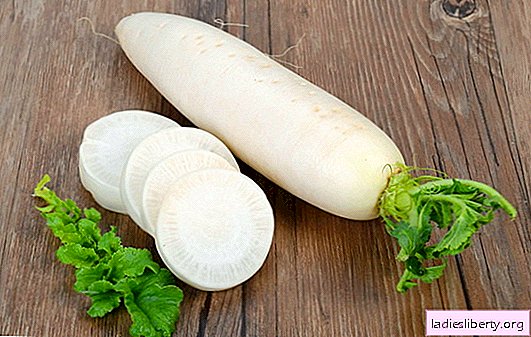
Growing roses is an exciting and enjoyable activity, but not always liked variety can be found on sale. You have to learn to breed roses yourself. This is not difficult at all, the main thing is to know the features of each method.
Which roses are best propagated by layering
This method is more suitable for roses that let large lashes, for example, shrubby, ground cover, climbing. For breeding choose the lower shoots that are closest to the ground. The best time for breeding is spring.
Before work, the soil under the bush is well dug up, sand and peat are added.
The following are instructions:
1. On the selected shoot, remove all leaves, make an incision on the lower bud, where the roots will grow.
2. Next to the bush, prepare a groove with a depth of 10 cm, lay the shoot with the cut down, if necessary, fasten with studs.
3. Cover the groove with loose soil, tighten the soil well, pour plenty of water.
Further watering is carried out regularly, especially in dry weather. Weeds will be removed during the summer. In autumn, a new plant is disconnected from the mother bush, the top is shortened by a third and planted in a permanent place. If the root system of a young rose is poorly developed, then the baby is left until spring.
The method of rose propagation described above by layering is considered classic, but there is one more - propagation by vertical layering. It is rarely used, not all varieties tolerate low pruning.
If you decide to try, then in the autumn cut the rose to a height of 5-7 cm. In the spring, when the shoots began to grow, spud the bush to the very top. Continue hilling throughout the summer so that the bush is always in the ground. In the fall, scoop up the soil and carefully cut off the rooted shoots.
Important! The soil used to grow the bush should always remain moist.
The method of propagation of adult roses by dividing the bush
Roses older than 5-7 years, on which many young shoots can be propagated by dividing the bush. The procedure is carried out in early spring. The bush is completely dug up, the roots are cut by a third, the shoots are shortened by 2/3.
The bush is cut with a sharp secateurs into several parts, so that each has roots and several buds. Prepare the clay mash in advance, which grease the roots before planting.
Delenki are planted in the usual way, deepening the root neck by 5 cm. After planting, roses are watered and well spud. Bushes bloom for 2 years after planting, when enough shoots have grown.
How to propagate roses with summer and winter vaccination
Not many gardeners know that you can propagate the variety you like by vaccination. This method is not as complicated as it seems, even a beginner grower will cope with it. The main thing to remember is the basic vaccination rules:
• roses are planted in winter or late summer;
• do not use too dry or frosty cuttings;
• rosehip seedlings are used as rootstock.
For grafting, fresh cuttings are chosen. Recently dried up can be revived if you lower them in water for several hours. Rosehip is chosen with a well-developed root system. It should be frost-resistant and drought-resistant species.
It is believed that the summer vaccination takes root better. It is carried out by the method of budding, i.e., is inoculated with an eye. The optimal time for vaccination is from mid-July to mid-August.
Inoculate in several stages:
1. The root neck of the scion, that is, the dogrose, is completely cleaned of the ground and shoots. A small T-shaped incision is made on it. A vertical incision of 2-5 cm and a horizontal not more than 1 cm. The bark is carefully pushed aside.
2. Cuttings for scion cleanse of leaves, cut off the top of it. Choose the strongest kidney and cut it along with a piece of bark.
3. The kidney is inserted into the incision, cut off all the excess bark so that the eye fits snugly to the shoot. The vaccination site is wrapped with a special film.
You can judge the success of the vaccine in 2-3 weeks. If the kidney remains green, swollen, then the eye has taken root. Take care of grafted plants using special technology. In winter, plants are spudded, but so that the vaccination site is closed by 5 cm. In early spring, the soil is moved away from the vaccination, the film is removed, the rootstock shoots are cut as close to the budding site as possible. After a few weeks, the shoots of a varietal rose should grow from the kidney. In the autumn, the bush will be ready for transplanting to a permanent place.
Winter vaccination is done in mid-February. Cuttings and stock are harvested in the fall. Store planting material in the basement in wet sand. In early February, cuttings and stock are brought into a warm room. The stock is planted in a pot with nutrient soil, an incision is made on the lateral shoot. Roses make an oblique incision on the cuttings, which are tightly combined with the stock. The vaccination site is smeared with garden var, tightly wrapped with a film. They try to keep the soil in the pot moist. In the spring, grafted bushes are planted in a permanent place.
How to propagate roses using the burrito method: preparing cuttings, planting instructions
Cuttings of roses can be carried out in early spring, when the buds are still sleeping. To do this, use cuttings after spring pruning. The lower part of the shoot is treated with a growth stimulator, the stalk is placed in a damp newspaper and put away in a dark place for several days. During this time, the beginnings of the roots will appear.
The prepared cuttings are planted in nutritious soil, covered with a bottle. As soon as the first leaves appear, the shelter is removed for a while, gradually removed altogether.
Important! It is noticed that in this way it is better to propagate roses with dark petals. Yellow and white flowers take root worse.
How to propagate roses with potatoes: tips for rooting cuttings
Root cuttings of roses can be an unusual way that any grower can handle. To do this, you need potatoes without eyes and cuttings without thorns and leaves.
In a well-lit area, dig a trench 15 cm deep, the bottom is well drained with sand. Cuttings are stuck in potatoes and planted in soil at a distance of 15 cm from each other. They fill the trench with nutritious soil, cover the cuttings with banks. Two weeks later, they begin to remove the shelter, gradually remove it completely.
Important! Cuttings are regularly watered, after a week they begin to fertilize.











